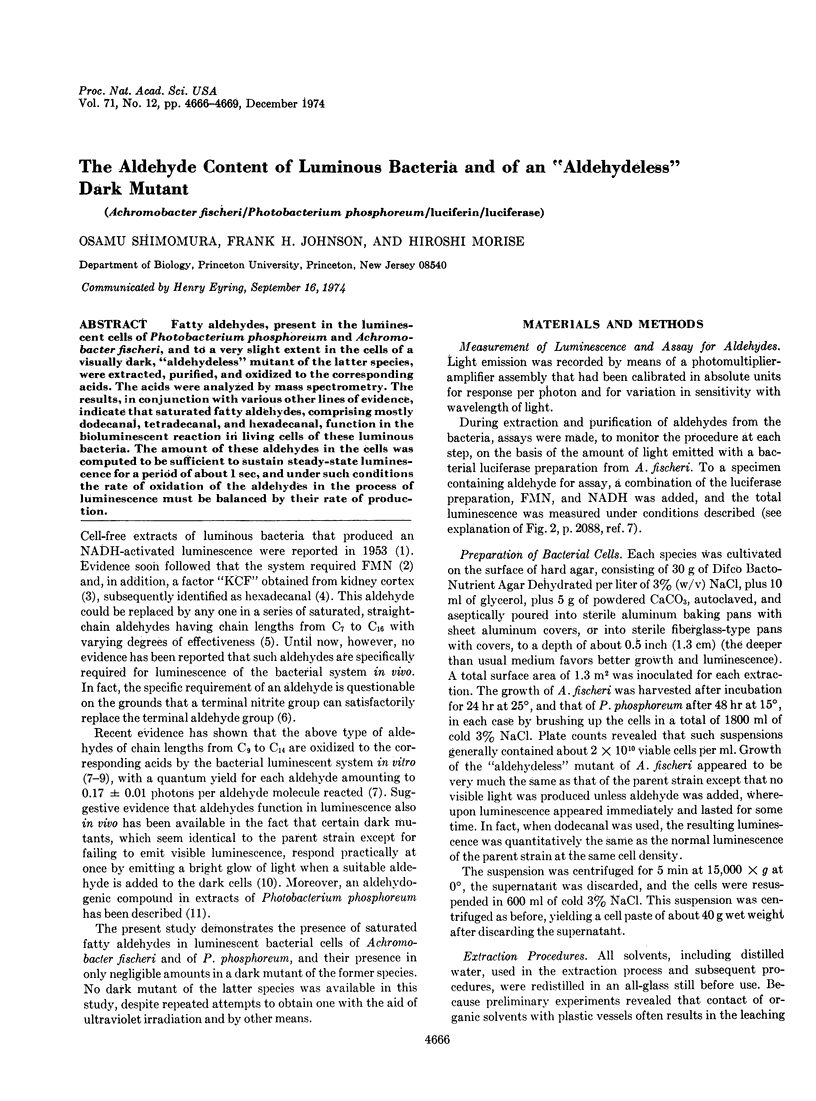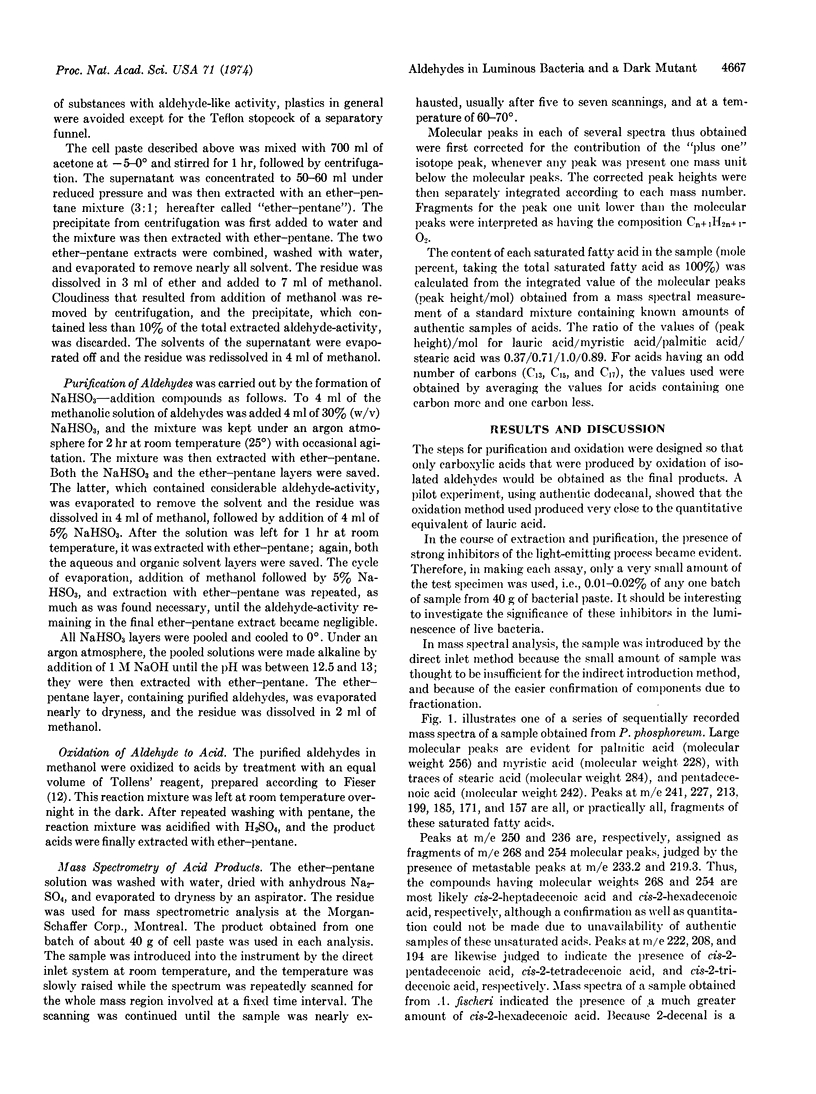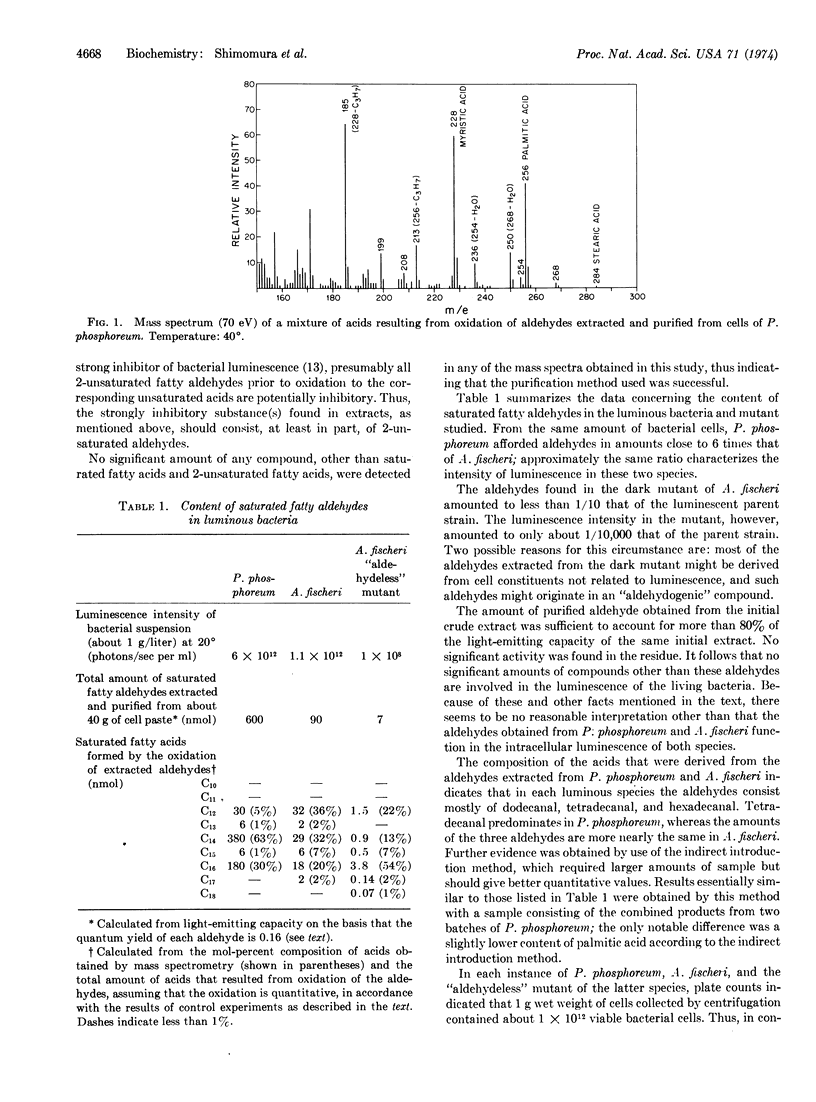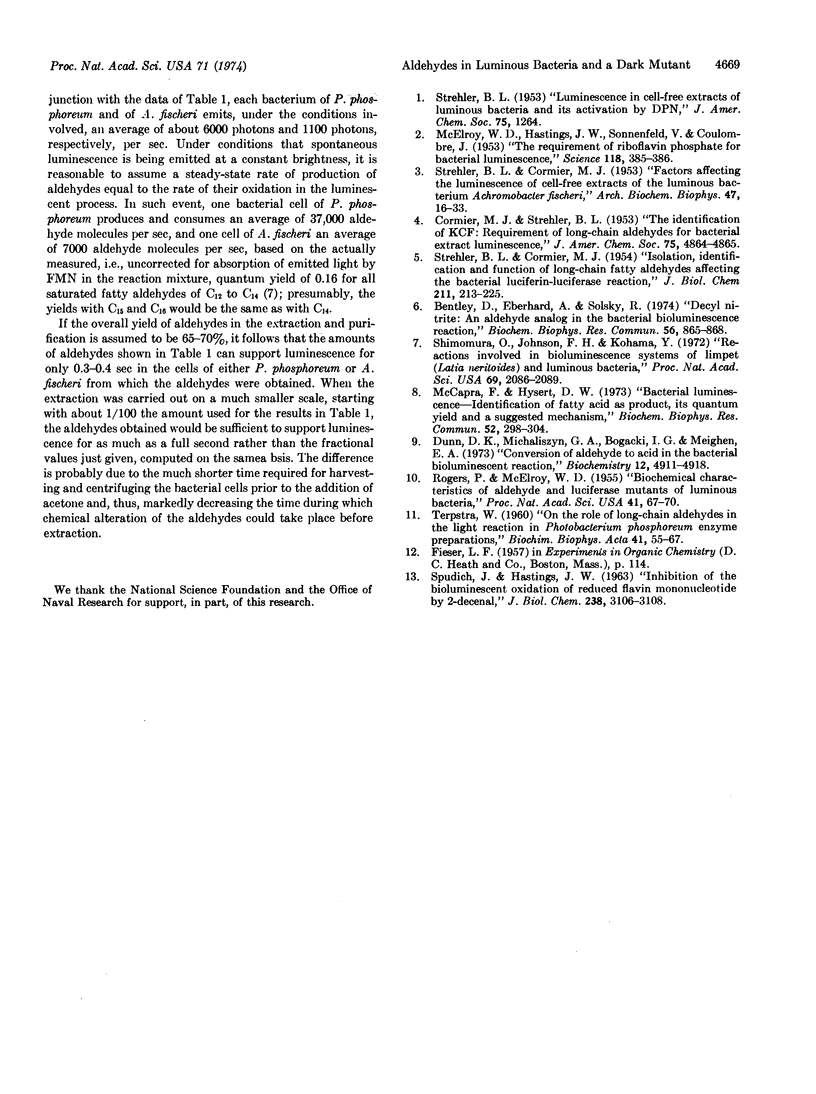Abstract
Fatty aldehydes, present in the luminescent cells of Photobacterium phosphoreum and Achromobacter fischeri, and to a very slight extent in the cells of a visually dark, “aldehydeless” mutant of the latter species, were extracted, purified, and oxidized to the corresponding acids. The acids were analyzed by mass spectrometry. The results, in conjunction with various other lines of evidence, indicate that saturated fatty aldehydes, comprising mostly dodecanal, tetradecanal, and hexadecanal, function in the bioluminescent reaction in living cells of these luminous bacteria. The amount of these aldehydes in the cells was computed to be sufficient to sustain steady-state luminescence for a period of about 1 sec, and under such conditions the rate of oxidation of the aldehydes in the process of luminescence must be balanced by their rate of production.
Keywords: Achromobacter fischeri, Photobacterium phosphoreum, luciferin, luciferase
Full text
PDF



Selected References
These references are in PubMed. This may not be the complete list of references from this article.
- Bentley D., Eberhard A., Solsky R. Decyl nitrite: an aldehyde analog in the bacterial bioluminescence reaction. Biochem Biophys Res Commun. 1974 Feb 27;56(4):865–868. doi: 10.1016/s0006-291x(74)80268-8. [DOI] [PubMed] [Google Scholar]
- Dunn D. K., Michaliszyn G. A., Bogacki I. G., Meighen E. A. Conversion of aldehyde to acid in the bacterial bioluminescent reaction. Biochemistry. 1973 Nov 20;12(24):4911–4918. doi: 10.1021/bi00748a016. [DOI] [PubMed] [Google Scholar]
- McCapra F., Hysert D. W. Bacterial bioluminescence-identification of fatty acid as product, its quantum yield and a suggested mechanism. Biochem Biophys Res Commun. 1973 May 1;52(1):298–304. doi: 10.1016/0006-291x(73)90987-x. [DOI] [PubMed] [Google Scholar]
- McELROY W. D., HASTINGS J. W., SONNENFELD V., COULOMBRE J. The requirement of riboflavin phosphate for bacterial luminescence. Science. 1953 Oct 2;118(3066):385–386. doi: 10.1126/science.118.3066.385. [DOI] [PubMed] [Google Scholar]
- Rogers P., McElroy W. D. BIOCHEMICAL CHARACTERISTICS OF ALDEHYDE AND LUCIFERASE MUTANTS OF LUMINOUS BACTERIA. Proc Natl Acad Sci U S A. 1955 Feb 15;41(2):67–70. doi: 10.1073/pnas.41.2.67. [DOI] [PMC free article] [PubMed] [Google Scholar]
- SPUDICH J., HASTINGS J. W. INHIBITION OF THE BIOLUMINESCENT OXIDATION OF REDUCED FLAVIN MONONUCLEOTIDE BY 2-DECENAL. J Biol Chem. 1963 Sep;238:3106–3108. [PubMed] [Google Scholar]
- STREHLER B. L., CORMIER M. J. Factors affecting the luminescence of cell-free extracts of the luminous bacterium, Achromobacter fischeri. Arch Biochem Biophys. 1953 Nov;47(1):16–33. doi: 10.1016/0003-9861(53)90434-2. [DOI] [PubMed] [Google Scholar]
- STREHLER B. L., CORMIER M. J. Isolation, identification, and function of long chain fatty aldehydes affecting the bacterial luciferin-luciferase reaction. J Biol Chem. 1954 Nov;211(1):213–225. [PubMed] [Google Scholar]
- Shimomura O., Johnson F. H., Kohama Y. Reactions involved in bioluminescence systems of limpet (Latia neritoides) and luminous bacteria. Proc Natl Acad Sci U S A. 1972 Aug;69(8):2086–2089. doi: 10.1073/pnas.69.8.2086. [DOI] [PMC free article] [PubMed] [Google Scholar]
- TERPSTRA W. On the role of long-chain aldehydes in the light reaction in Photobacterium phosphoreum enzyme preparations. Biochim Biophys Acta. 1960 Jun 17;41:55–67. doi: 10.1016/0006-3002(60)90368-1. [DOI] [PubMed] [Google Scholar]


